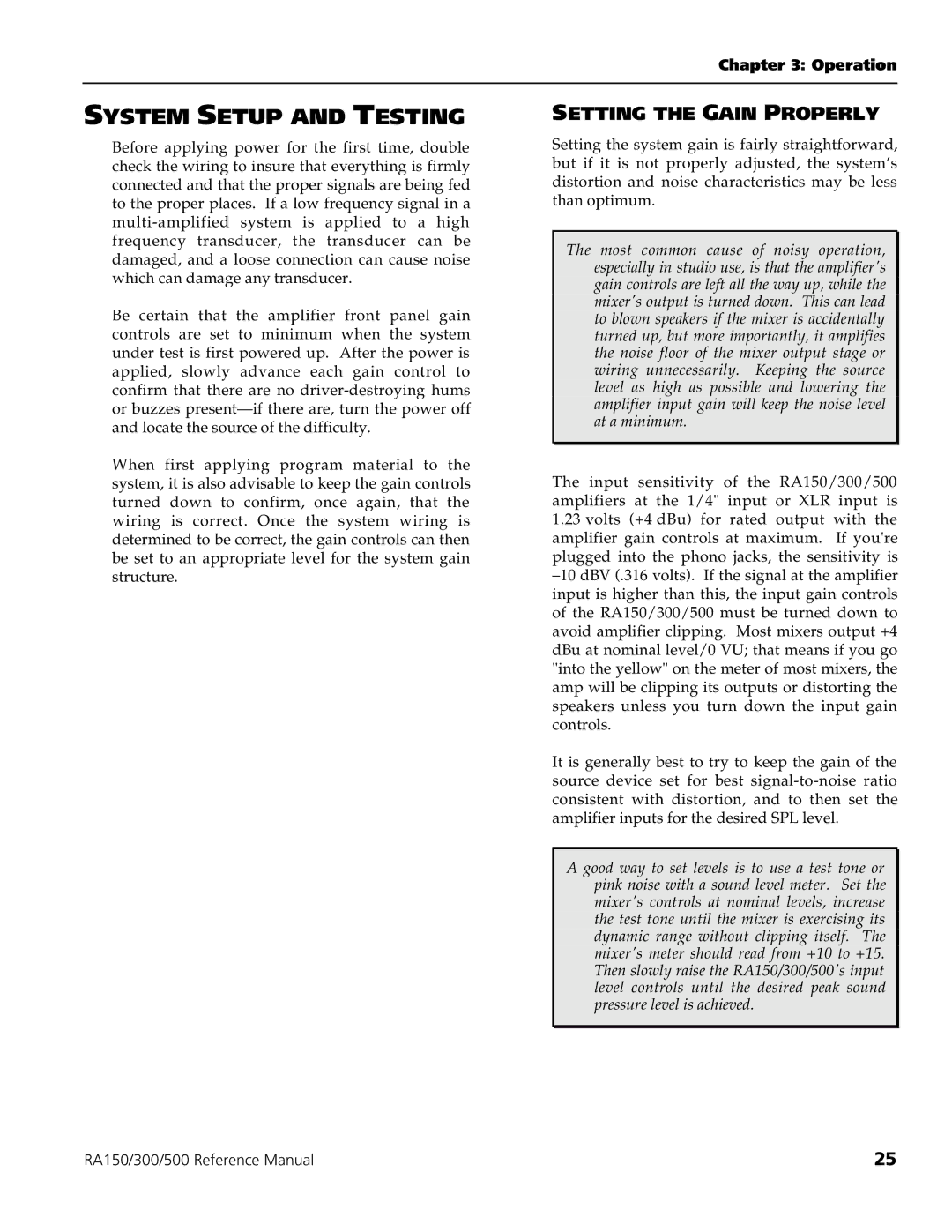RA150, RA500, RA300 specifications
The Alesis RA series of amplifiers—comprising the RA300, RA500, and RA150—have earned a respected spot in the audio equipment landscape, catering to both musicians and audio professionals. With a blend of innovative technology, robust performance, and user-friendly features, these amplifiers offer solutions for various sound requirements.Starting with the RA300, this amplifier delivers a solid output of 150 watts per channel at 4 ohms, making it ideal for smaller studio setups or personal listening environments. It is built with a lightweight yet durable design, employing a modern Class AB architecture that ensures low distortion and high audio fidelity. The RA300 features comprehensive input options, including balanced XLR and quarter-inch TRS inputs, allowing seamless integration into diverse setups. Additionally, the built-in protection circuitry prevents overheating and damage during prolonged use, ensuring longevity and reliability.
The RA500 steps up the power and performance, presenting a robust 250 watts per channel at 4 ohms, making it suitable for larger venues and demanding applications. It utilizes advanced thermal management technology, which aids in efficient heat dissipation, ensuring the amplifier operates smoothly even under heavy load. The RA500 also boasts significant dynamic range and headroom, making it a preferred choice for professional environments where audio clarity and volume are paramount. The addition of a frequency response that spans from 20Hz to 20kHz means it can faithfully reproduce a wide range of audio frequencies.
Meanwhile, the RA150 serves as a versatile option for various applications, delivering 75 watts per channel at 4 ohms. Despite its compact size, the RA150 does not compromise on sound quality or functionality. Its Class AB amplifier technology results in enhanced audio accuracy, making it popular among beginner studios and educational settings. The straightforward controls and indicators ensure that users can quickly adjust settings for optimal performance.
All three amplifiers in the Alesis RA series share a common goal: to provide high-quality sound amplification without unnecessary complexity. Their combination of solid construction, advanced technologies, and thoughtful features make them suitable for a multitude of audio environments—from home studios to professional gigs. Whether you opt for the RA300, RA500, or RA150, you are investing in a reliable tool designed to deliver exceptional audio performance, catering to the needs of discerning audiophiles and professionals alike.

